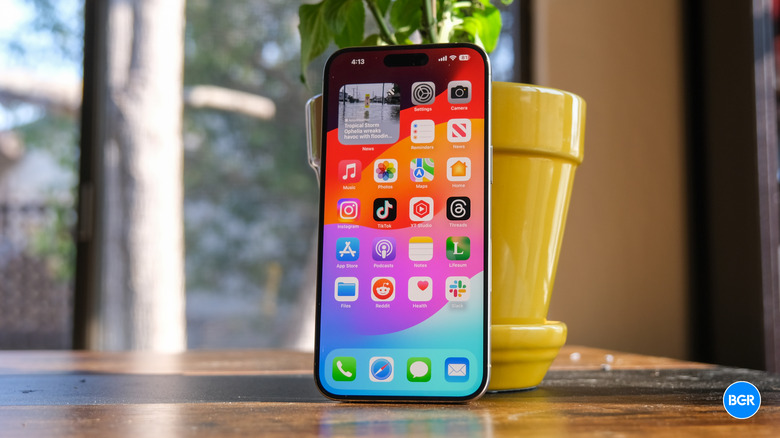Apple Is Working On Thinner Designs For Next-Gen iPhone 17, Apple Watch, And MacBook Pro
A new report from Bloomberg relays that Apple's iPhone 17, set for launch in 2025, may be significantly thinner than its predecessors. The report is interesting insofar that Apple, especially since Jony Ive left the company, had somewhat abandoned its obsession with thinness. For many, this was a welcome about-face as some felt that Apple was sacrificing functionality for aesthetics. Indeed, countless surveys over the years have shown that most Apple users prefer a slightly bulkier form factor if it entails a slightly larger battery.
Interestingly, Apple's newfound prioritization of thinness won't be exclusive to the iPhone. On the contrary, the company is also looking to release thinner MacBook Pro and Apple Watch models.
To this end, Bloomberg notes that Apple's goal is to release devices that are "the thinnest and lightest in their categories across the whole tech industry." It's an intriguing proposition, and if Apple can figure out a way to achieve this without sacrificing battery life across any of its products, it's certainly a step in the right direction.
How thin will the iPhone 17 be?
As it stands now, we haven't seen huge fluctuations in iPhone thickness over the years. Still, those sensitive to mild adjustments in weight and size may have noticed a slight difference across various models. For instance, Apple's iPhone 15 Pro and iPhone 15 measure in at a depth of 8.25mm and 7.8mm, respectively. As a point of comparison, Apple's iPhone 12 Pro and iPhone 12 models were both about 7.44mm thick.
So, how thin are we talking if Apple wants to have the thinnest smartphone in the industry?
Well for starters, we might want to eliminate foldable phones as it's not exactly a fair comparison. Google's Pixel Fold, for instance, is 5.8mm thick, but that's only when the device is fully opened. Taking those devices out of the running, most of the slimmest smartphones on the market today have a thickness in the range of 7.2mm to 7.7mm.
Meanwhile, the thinnest iPhone model ever released was the iPhone 6, which had a thickness of 6.9mm. If Apple can somehow release a next-gen device in that range of depth, it would be impressive. Recall that smartphones today are thicker than in years past due to features like bigger batteries and more advanced camera modules.
It's worth noting that this isn't the first time we've seen reports pointing to a slimmer iPhone 17 design. Last month there was a report claiming that Apple in 2025 will release an iPhone 17 Slim to replace what would have been the iPhone 17 Plus.
Some other iPhone 17 Pro rumors we've seen point to a smaller Dynamic Island, 12GB of RAM, a 24MP front-facing camera, and maybe even Face ID sensors underneath an active area of the display.
